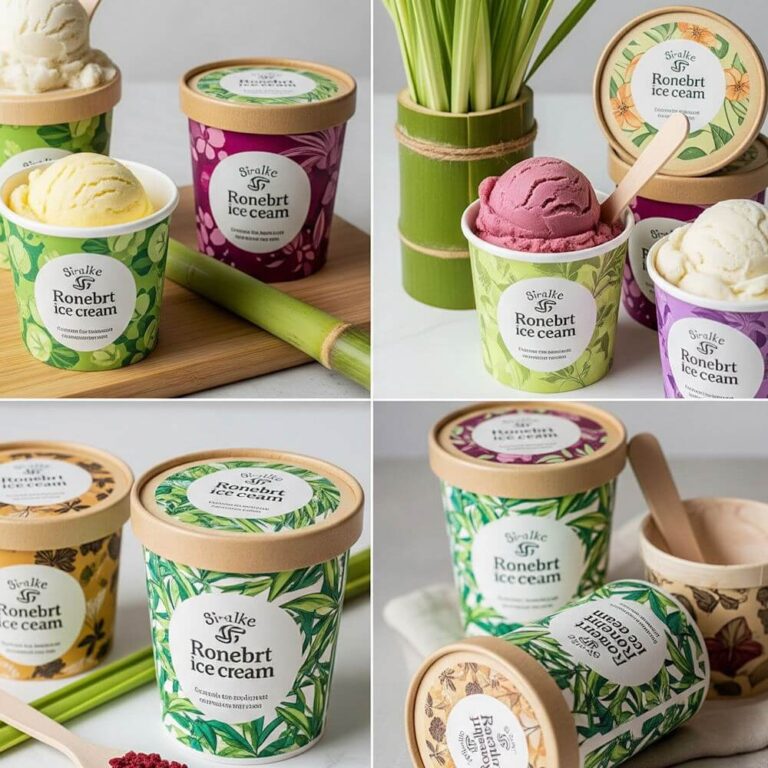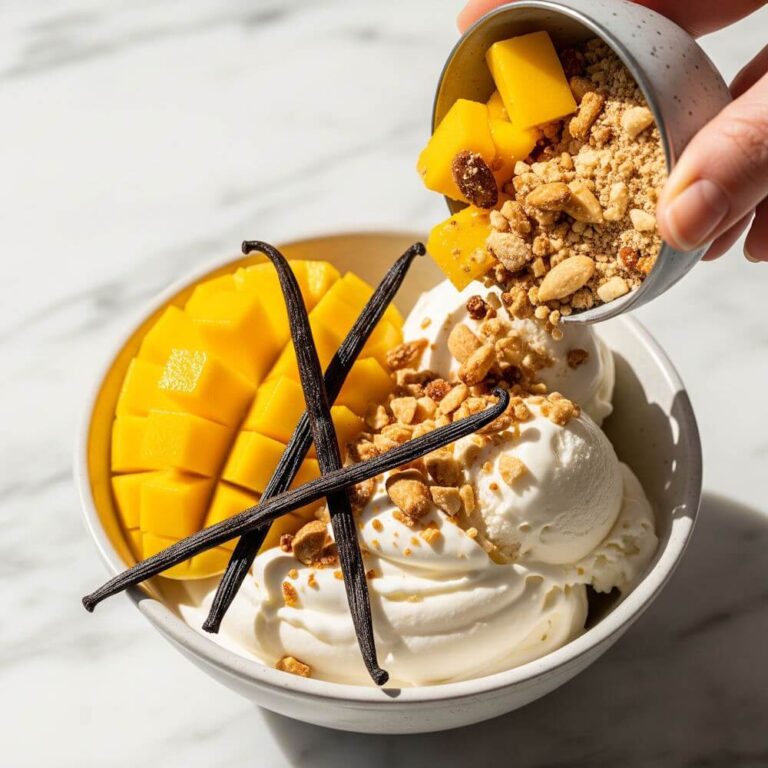Understanding the Market
The ice cream market is a vibrant landscape characterized by evolving consumer preferences and emerging trends. In recent years, there has been a noticeable shift towards premium and artisanal ice cream products. Consumers are increasingly seeking unique flavors and high-quality ingredients, which create opportunities for small, independent brands to capture market share. The growing interest in artisan ice cream reflects a broader trend towards healthier and more transparent food choices, where customers are keen on knowing the source of their ingredients.
Popular flavors are continuously changing; however, there is a significant appetite for innovative combinations that blend traditional favorites with contemporary twists. For instance, flavors such as lavender-infused vanilla or spicy chai have gained traction alongside classic options like chocolate and strawberry. This growing interest in unconventional flavors is met with a considerable demand for dairy alternatives, catering to lactose-intolerant consumers or those adhering to vegan diets. As the market dynamics shift, it is essential to recognize these evolving tastes to tailor your offerings effectively.
The competitive landscape of the ice cream industry is equally important to understand. While large brands dominate significant market portions, there is room for small retailers to establish themselves. Understanding the local market dynamics will help identify the right retailers whose customer bases align with your brand’s values and offerings. For instance, community-centric stores may resonate better with artisanal products than larger supermarkets. Retailers often look for products that tell a story, emphasizing quality, sustainability, and local sourcing. Positioning your ice cream brand to meet these expectations is critical in sustaining interest among small retailers.
In navigating the ice cream market, grasping the trends, consumer preferences, and competitive landscape will be integral to your approach in establishing partnerships with small retailers. These insights not only enhance your strategy but also significantly impact your potential for growth in this competitive, yet rewarding market.
Identifying Target Retailers
When seeking to stock your ice cream in small retail establishments, it is imperative to carefully identify potential retailers that resonate with your brand’s identity and values. Taking the time to research and understand the diverse landscape of small retail options will enhance your chances of success in entering these markets. Start by considering various types of retail outlets, such as grocery stores, specialty food shops, and local cafes. Each type of retailer has its unique clientele and attributes that may align well with your ice cream product.
Grocery stores, for instance, often cater to a broad audience, making them a suitable choice if your ice cream brand focuses on affordability and convenience. On the other hand, specialty food shops frequently target consumers looking for unique or high-quality products, which might align well with premium or artisanal ice cream offerings. Similarly, local cafes could provide an excellent venue for a product known for embellishing social experiences, like handcrafted ice creams with unique flavors or organic ingredients.
An essential step in the process involves creating a targeted list of retailers based on their customer demographics and product offerings. This may involve analyzing the preferences and buying behaviors of customers in your desired market segment. Use industry reports, online store directories, and social media insights to gather data that confirms a retailer’s compatibility with your brand. Furthermore, a store’s product range should reflect values similar to yours, whether that includes sustainability, local sourcing, or health consciousness. By identifying and prioritizing these small retailers, you effectively set the stage for a successful introduction of your ice cream, one that is well-aligned with their existing offerings and customer preferences.
Preparing Your Pitch
When approaching small retailers about stocking your ice cream, preparation is key to crafting a compelling pitch. Start by developing a clear and engaging presentation that showcases your product and its unique qualities. Ensure that your presentation tells a story—one that reflects the inspiration behind your ice cream, the processes involved in its production, and any special attributes that set it apart from competitors. This storytelling approach helps create an emotional connection with the retailer and makes your product memorable.
One critical component of your presentation is your unique selling proposition (USP). This is the distinct feature or benefit that makes your ice cream desirable to consumers and retailers alike. Whether it’s using locally sourced ingredients, offering unique flavors, or catering to special dietary needs, clearly articulate your USP. A well-defined USP not only grabs attention but also provides retailers with a solid reason to believe that your product will succeed in their store.
Additionally, don’t overlook the importance of product samples. Prior to meeting with retailers, prepare small, attractive samples of your ice cream for tasting. Sampling allows potential stockists to experience the flavor and quality of your product firsthand, often influencing their purchasing decision significantly. Make sure your samples are presented professionally and include information about packaging and pricing as well.
As you present your product, be prepared to handle questions about your ice cream. Retailers will likely want to know about sales performance, shelf life, and marketing support. Demonstrating in-depth knowledge of your ice cream will lend credibility and instill confidence in your potential partners. Lastly, highlight any achievements your brand has earned, such as media coverage, awards, or positive customer testimonials, to further strengthen your case.
Setting Up a Meeting
Approaching small retailers to discuss stocking your ice cream products requires a strategic approach to setting up meetings. The initial outreach is crucial as it lays the groundwork for a fruitful relationship. To begin, consider utilizing email as your primary means of communication. Craft a concise and compelling message that introduces yourself and your brand, highlighting what distinguishes your ice cream from competitors. Personalizing your email to reflect the retailer’s values or clientele can greatly enhance your chances of securing a meeting. Aim for a friendly yet professional tone that invites dialogue.
In addition to emails, phone calls can be an effective tool for engagement. When choosing this method, ensure you have a clear objective and a script prepared, but remain flexible to allow for a natural conversation. Start by identifying the right point of contact within the retailer’s organization. Call during hours when retailers are typically less busy, and be respectful of their time. A polite ask about setting up a meeting can often yield positive results, especially if you exhibit confidence and clarity regarding the benefits of your ice cream products for their business.
Another strategy involves in-person visits, especially if a retailer is local. Walking into their shop can be an excellent opportunity to demonstrate your product. Bring samples and marketing materials that showcase your brand’s identity and storytelling. Just as with other methods, establish rapport without being excessively pushy; the goal is to build a relationship rather than merely pitching your product. Following up after a meeting, whether through a thank-you email or a quick phone call, reinforces your interest in collaboration. Employ these strategies thoughtfully to set the stage for productive discussions with potential retailers.
Presenting Your Product
When approaching small retailers about stocking your ice cream, a strategic presentation of your product is essential. The first step is to highlight the quality of your ice cream. Use high-quality ingredients and artisanal methods to create flavors that stand out in a crowded market. Testimonials or awards can lend credibility to your claims, making them persuasive addition to your pitch.
In addition to quality, the uniqueness of your offering plays a critical role. Focus on the flavors and combinations that differentiate your ice cream from competitors. Consider featuring seasonal flavors or locally sourced ingredients to enhance local appeal. This aspect of your pitch should also include the story behind your brand. Consumers tend to resonate with brands that have a compelling narrative, so be prepared to share your journey and the inspiration behind each flavor.
Equally important is the packaging. Eye-catching and informative packaging can significantly impact retail decisions. Invest in designs that reflect your brand identity, ensuring they are not only visually appealing but also provide key information on what sets your ice cream apart. Clarity regarding ingredients, dietary options, and flavors can aid retailers in making informed stocking choices.
Running effective taste tests is a vital practice when introducing your ice cream to potential retailers. Selecting a small, diverse audience can provide valuable feedback. Ensure that the tasting environment is conducive to an enjoyable experience, and offer samples that represent your product well. Encourage honest feedback, and be responsive to any critiques or suggestions. Adaptability can demonstrate your commitment to customer satisfaction and product improvement.
Ultimately, presenting your ice cream to small retailers effectively requires showcasing its quality, uniqueness, and attractive packaging, complemented by the strategic use of taste tests. This approach not only establishes a strong case for stocking your product but also fosters relationships built on trust and mutual interest.
Discussing Terms and Logistics
In the realm of establishing partnerships with small retailers for stocking your ice cream, discussing terms and logistics is paramount. This stage shapes the foundation of your business relationship and should be approached thoughtfully. Key components include pricing strategies, delivery schedules, minimum order quantities, and return policies. Each of these elements plays a critical role in ensuring the success of your product on their shelves.
When considering pricing strategies, it is essential to strike a balance between competitiveness and profitability. Small retailers often operate on tight margins, so presenting pricing that highlights value can be advantageous. Offering introductory discounts or promotional prices can entice retailers, encouraging them to take a chance on your product. Additionally, discussing potential volume discounts can create a win-win scenario for both parties, fostering long-term engagement.
Delivery schedules are another vital consideration. Establishing a reliable and efficient delivery timeline will reassure retailers of your commitment and ensure they maintain adequate stock levels. Communicate thoroughly about not only delivery frequencies but also potential lead times for new orders. Consistent communication can prevent misunderstandings and disruptions.
Moreover, determining minimum order quantities (MOQs) is crucial. While it can be tempting to set low MOQs to encourage initial stocking, be mindful of the practicality for your logistics. Setting reasonable MOQs can help streamline processes, albeit it is important to remain flexible as retailers may need adjustments based on demand fluctuations.
Finally, return policies should be clearly articulated. Retailers will appreciate knowing how unsold stock is handled. Offering a favorable return policy can enhance their willingness to stock your ice cream. Throughout these discussions, maintaining an open line of communication and a willingness to negotiate can foster trust, laying the groundwork for a fruitful business relationship.
Building Relationships
In the competitive ice cream market, establishing long-term relationships with small retailers is crucial for sustained success. Rather than viewing each transaction as merely a sales opportunity, it is vital to consider these interactions as the foundation of a mutually beneficial partnership. This approach fosters loyalty and encourages retailers to promote your ice cream brand more vigorously.
Effective communication is a key element in nurturing these relationships. Regular check-ins and updates about product availability, seasonal flavors, or changes in pricing can go a long way in keeping your ice cream brand at the forefront of the retailer’s mind. These conversations should be approached as collaborative discussions rather than one-sided pitches. Understanding the retailer’s needs, challenges, and customer preferences allows for a tailored approach that can benefit both parties.
Moreover, offering support to retailers is another significant aspect of building strong connections. This could mean providing marketing materials, staff training on product offerings, or assistance in planning promotional events that feature your ice cream. By empowering retailers with the right tools, they are more likely to engage in promoting your brand effectively to their customers. Engaging in joint promotions or creating special in-store displays can also enhance visibility and sales.
To further strengthen your relationships, consider creating exclusive offers or incentives for the retailers you partner with. This could range from special pricing on new flavors to loyalty discounts for consistent purchases. Regularly sharing updates about your ice cream, including new releases and behind-the-scenes glimpses of your production process, keeps them informed and engaged. By focusing on these strategies, you can forge lasting partnerships that lead to repeated sales and a strengthened brand presence in the market.
Marketing and Promotion Strategies
To successfully engage small retailers in stocking your ice cream, a robust set of marketing and promotion strategies is essential. These techniques not only enhance product visibility but also foster a collaborative environment between you and the retailers. One effective approach is cooperative marketing, where both parties share costs for joint advertising efforts. This can include local newspaper ads, digital marketing campaigns, or promotional flyers that feature your ice cream alongside the retailer’s branding. By pooling resources, both the ice cream brand and the retailer can benefit from increased exposure at a reduced cost.
In-store events serve as another pivotal strategy. Hosting tasting events allows potential customers to sample your ice cream, creating a memorable experience that encourages purchases. These events can be tailored to suit seasonal themes or local festivals, drawing in foot traffic and generating buzz around the product. Collaborating with the retailer to create engaging in-store displays that highlight the unique aspects of your ice cream can also capture the attention of passersby, fostering curiosity and interest.
Leveraging social media is crucial in the current retail landscape. Establishing a strong presence on platforms such as Instagram and Facebook allows for sharing enticing visuals of your ice cream, along with promotions specific to the retailer. Engaging local food influencers also provides an opportunity to reach a wider audience, as their endorsements can lend credibility and generate excitement around your product. By intentionally integrating these strategies, small retailers can successfully promote your ice cream, ultimately driving sales and fostering a long-term partnership.
Evaluating Success and Feedback
Evaluating the success of your retail partnerships is a critical step in ensuring the sustainability and growth of your ice cream brand. To effectively assess these partnerships, you should establish clear metrics that can guide your analysis of sales performance and customer feedback. Start by tracking key performance indicators (KPIs) such as sales volume, revenue per location, and inventory turnover rates. These metrics will help you ascertain whether your ice cream is resonating with the target audience at each retail outlet.
In addition to quantitative data, qualitative feedback from customers can provide invaluable insights into their experiences with your product. Encourage retailers to collect customer feedback through surveys or comment cards. Asking questions about flavor preferences, packaging appeal, and overall satisfaction can yield actionable insights. Furthermore, consider implementing a digital feedback system where consumers can easily share their thoughts online, allowing for broader engagement and more comprehensive data collection.
Once you have gathered the necessary data, analyze it to identify trends and areas for improvement. If certain products are underperforming, consider factors such as flavor variety or pricing strategy. If customer feedback frequently highlights specific issues, it may be prudent to address these concerns proactively. For instance, if several consumers express a desire for dairy-free options, expanding your product line might be a beneficial move.
Adapting your strategy based on this evaluation process is essential to fostering successful relationships with retailers. Continuous improvement not only enhances product offerings but also reinforces your brand’s commitment to meeting customer expectations. By regularly revisiting your performance metrics and collecting feedback, you can fine-tune your approach, ultimately leading to a more successful partnership with small retailers. This evaluative process is crucial in establishing a product that not only sells but also enriches the customer experience.





